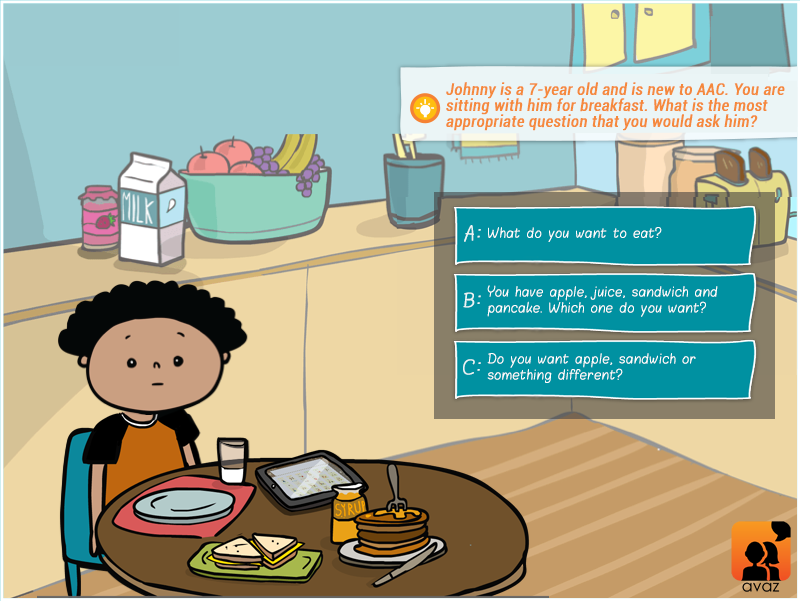We asked the below question to our FB-community and we thank our fans for coming up with answers and making the discussion lively.


The reason we posed this question was because it throws up a number of interesting subtleties in AAC strategy, which every parent should know. First a disclaimer that the ‘correct’ answer depends on the child, and you should consult the child’s therapist for the best advice.
We think the better approach would be option-C. Our reasoning is as below:
While open-ended questions may work for some children, it may not be easy to get an answer from children who are just starting to communicate. If they don’t respond well to these types of questions, offering a choice is a good way to start. Choice-making is one of the initial communicative functions children learn, and it gives them control over their lives. Read more about it here.
Choice-making increases independence and decreases frequent behaviour problems1.
When it comes to making choices, you might be tempted to use “yes or no” questions because they are simple for children to understand. However, these responses may be more problematic for some children because the “yes or no” concept is generally a cognitive and communication skill that is learned in later development. So, the best approach is to ask questions that offer specific and direct choices. Read more here: AAC Basics and Implementation by Paul Visvader
When you offer choices, it’s best not to offer too many options at the same time, which may be confusing. It is a good idea to begin with a choice between two items. In the third option from above, “different” gives the child a chance to explore a choice outside the first two and encourages autonomous communication.
Generalizing the Learning:
Choice-making techniques can be used in many situations and help children learn in multiple ways. For example:
- At mealtime: “Do you want to sit next to Dad or Mom?”
- At playtime: “What do you want to play with? The ball, the blocks, or something different?”
- While getting dressed: “What color shirt do you want to wear? Red, blue, or something different?”
- While eating ice-cream: “What flavor of ice-cream do you want? Vanilla, strawberry, or something different?”
If you are keen to know about an AAC solution where you can learn these strategies & tips, write to us at sally@avazapp.com.
Happy Communicating!!
References:
- 1Functional communication training using assistive devices: Effects on challenging behaviour and affect. Augmentative and Alternative Communication, 9, 168-176. – Durand, V. M. (1993).
- 1Functional augmentative communication and positive behaviour change. Augmentative and Alternative Communication, 11, 207-211.- Robinson, L. A., & Owens, Jr., R. E. (1995)

